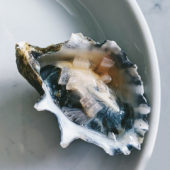
Here we are. The last CSA post of the season. I don’t know whether to click my heels in the air or shed a tear. I’m torn….
These posts are a beast to put together – many of them tally 3,000 words in length, which to give you some perspective, is like writing an AP English final every week (albeit without the stress and pre-reading).
But it’s fun. I love taking you on a journey through food: how we tackle mealtime based on our CSA deliveries, and how we use leftovers from one meal to create the next. It keeps me honest – never again will I question exactly what went into that strawberries and cream cake that I served on Emma’s birthday, or wonder how I made those waffled grilled cheeses.
I keep thinking about next week’s post, and the post after that – will I feel empty writing about just….one dish?
Perhaps. And perhaps not. Maybe having some free time will motivate me to clean out the kids’ long stockpiled art collection. Shop for some desperately-needed non-2007-era clothes. Massage? Manicure! This is actually starting to sound good….
Today I’ll leave you with the set of recipes that I made from my final Bialas Farms box: Week 18. Here’s what we received in our box this week:
- Baby Bakers (potatoes)
- Leeks
- Green Cabbage
- Delicata Squash
- Shallots
- Lettuce
- Sweet Carrots
- Bunched Beets
- Sugar Pumpkin
- Celery
- Bok Choy
It’s a big set of recipes. Something about this being my last box made me nostalgic about my deliveries before the week was over. If last week I struggled to put interesting meals on the table, this week I was chock full of ideas. It also helped that I received my monthly box from Hatchery, whose products always seem to get the juices flowing.
I’ll admit that the first meal that I made doesn’t fall squarely into the “interesting” category. A split roast chicken, carrots and parsnips cooked in honey, butter and herbs (along with some of the chicken juices).

Not creative and unique, but certainly delicious…And made for a beautiful Saturday night dinner at the lake, paired with a butternut squash casserole and a fresh green salad with a previous week’s stash of leftover romaine.
I found the squash casserole on Food & Wine magazine’s site and followed it to the letter. Not only was I able to use my CSA butternut squash, but I also used some of the leeks from last week’s box, as well as thyme from my kitchen garden. If you’re planning Thanksgiving sides, I highly recommend this bad boy.
With a little leftover chicken, and some homemade stock from the bones, I made a Sunday night (gluten free) chicken noodle soup. I had a few old zucchinis from a few weeks ago, which looked like they were nearly ready for the garbage bin—but I was able to salvage this sorry lot by peeling off some of the softening green skin, and spiralizing them into noodles.
My kids are so-so with spiralized zucchini noodles on their own, but I learned this week that if you add them to soup, their whole attitude changes. Sam even declared this chicken and vegetable noodle soup his new favorite. In fact, he made me promise me that I would still make him this “when he’s an adult”. Deal.

To make the chicken soup with zucchini noodles
First make the chicken stock by taking the remaining bones from the half chicken and placing them along in a slow cooker with a few types of chopped vegetables (I used leek greens, carrots, and celery) along with some thyme and black peppercorns. Cover with water and cook on low overnight, and then strain the next day. Save any remaining chicken for your soup, and if you have none left, simply cook a breast the next day and chop/shred it for the soup. Store the stock in the fridge until you’re ready to use it for the soup.
When you’re ready to make the soup, simply prep a bunch of vegetables- I used chopped celery, carrots, red peppers, and zucchini noodles (1 zucchini, peeled, and passed through a spiralizer). Since the carrots, celery and red peppers are quite hard, you can either cook them in the chicken stock in the slow cooker for a few hours when you’re out that day, or if you’re using them at the last minute, put them in a microwave-safe container with a splash of water, and nuke, partially covered, for about 2 minutes. Drain the water. In a Dutch oven, combine your vegetables (including the zucchini noodles) and your stock and bring to a simmer. Add salt to taste, and some chopped fresh parsley. In a separate bowl, whisk an egg, and then slowly add a ladleful of hot stock to the bowl, whisking constantly. Take the pot of soup off the heat, and then add the stock/egg mixture to the pot, stirring constantly. On low heat, warm the soup gently for a minute or two, making sure that the soup doesn’t boil and scramble the eggs. Serve with a grinding of fresh black pepper.
Note: If you have leftovers, this soup may separate in the fridge. If that happens, just give the jar a good shake before heating it back up.
If you were to guess what my favorite vegetable has been, you would likely guess incorrectly. The vegetable that I loved most of all, strangely enough, was this: German white garlic.
There is a huge difference between the garlic that I find at the grocery store, and the plump, sturdy cloves that I received most weeks as part of my CSA. The German white garlic heads come with only 4-5 cloves – not multitudes of tiny cloves that make you peel and curse, peel and curse. I hate that garlic. It does the job, but oy.
So not only did I receive garlic most weeks with my CSA, but I also bought extra to stow away for rainy days and stewing adventures.
This is not stew:

continue reading
































